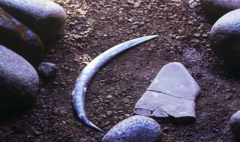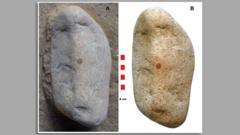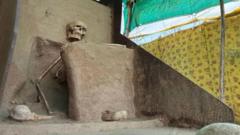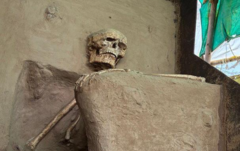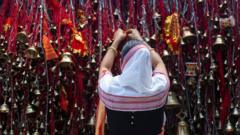Rakhaldas Banerjee, an astute yet contentious Indian archaeologist, made significant breakthroughs in the early 20th century by uncovering the ancient city of Mohenjo-daro, part of the Indus Valley Civilization. Despite the magnitude of his contributions, controversy and bureaucratic disputes marred his legacy, leading to his current obscurity.
The Legacy of Rakhaldas Banerjee: Rediscovering the Indian Explorer Behind Mohenjo-daro

The Legacy of Rakhaldas Banerjee: Rediscovering the Indian Explorer Behind Mohenjo-daro
A pioneer archaeologist whose groundbreaking work revealed key insights into an ancient civilization remains overshadowed by controversy.
In the annals of archaeology, few figures are as intriguing and overlooked as Rakhaldas Banerjee. Born in 1885 into a prosperous family in Bengal, he grew up among medieval structures that ignited his passion for history. His adventurous spirit propelled him into a career with the Archaeological Survey of India (ASI) during the British colonial period, where he swiftly climbed the ranks due to his dedication and prowess in archaeology and epigraphy.
Banerjee's most illustrious achievement came in the 1900s when he unveiled the ruins of Mohenjo-daro, an ancient city situated in present-day Pakistan. This site represented the zenith of the Indus Valley (Harappan) Civilization, which flourished approximately 5,300 years ago and stretched across a vast region from Afghanistan to India. His extensive excavations at Mohenjo-daro unearthed remarkable artifacts, including seals, coins, pottery, and stone stupas that provided crucial insights into the civilization's complexity and reach.
However, despite his monumental discovery, Banerjee's contributions have often been overshadowed by controversies stemming from his unyielding and sometimes audacious nature. His reports, which contained vital discoveries, were notably never published by the ASI. Allegations by fellow archaeologist PK Mishra suggest that John Marshall, then Chief of the ASI, claimed credit for Banerjee’s findings, casting a shadow over Banerjee's rightful accomplishments. Additionally, Banerjee's confrontations with ASI hierarchy due to his independent ventures created significant friction, ultimately sullied his professional reputation.
Banerjee’s inquisitive nature led to clashes with authority, most notably during an incident where he sought artifacts from a museum without proper permissions, causing tension that would follow him throughout his career. His ambition and lack of political tact frequently landed him in trouble, painting him as a challenging figure to work with, as noted by historian Nayanjot Lahiri.
Although Banerjee was a household name among historians in Bengal, public recognition of his achievements faded significantly after his transfer from Mohenjo-daro, owing to growing scrutiny of his financial dealings and improprieties surrounding his spending. Disciplinary action loomed after discrepancies emerged regarding his expenditures; however, he ultimately requested and received a transfer to eastern India.
After leaving ASI in 1927 amid allegations of idol theft—which he vehemently denied—Banerjee turned to academia, becoming a professor at Banaras Hindu University. Unfortunately, his financial difficulties continued, exacerbated by a penchant for lavish living. This culminated in his untimely death at the age of 45, leaving behind a complex legacy marked by significant archaeological accomplishments yet overshadowed by personal controversies.
The story of Rakhaldas Banerjee invites us to reconsider our historical narratives and the figures who shape them, urging a reexamination of contributions often relegated to mere footnotes in the vast chronicles of history.





